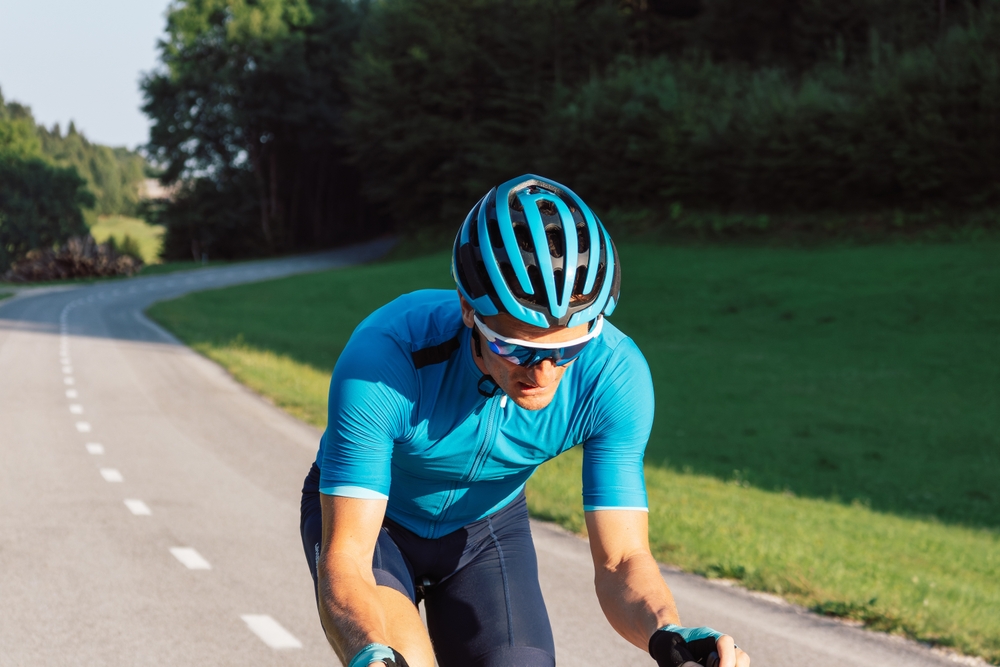There are so many things to think about when buying a bike helmet, so here is our full guide to cycle helmets.
This covers key areas such as what to consider when buying a new one, how to store your helmet, and what to do when it reaches the end of its life. It doesn’t matter whether you’re a passionate cyclist, or just someone who rides their bike occasionally, it’s key to have a well fitted helmet.
Are cheap bicycle helmets good?
It’s important to remember that all helmets will have to be safety checked before they are allowed to be sold in the UK. They must meet the European standard EN1078, so it doesn’t matter how much you spend on them.
You can find this on the label on the inside of the helmet, so make sure you check this before you buy. These helmets are put through a set of tests to ensure that they will protect your head as best as possible in case of an accident.
How much should you spend on a cycle helmet?
There isn’t a set amount you should spend, as it all comes down to what you’re wanting to use your bike for. If you’re using it for competitions, you’ll want it to have different properties than if you’re just commuting to work.
The more expensive helmets tend to be more aerodynamic, have advanced ventilation, and lighter in weight. It’s a good idea to read some of the reviews online, especially if it’s a higher range helmet.
Is it the law to wear a cycle helmet?
Whilst it’s not the law to wear a helmet, the highway code recommends that you do wear one. The reason to wear a cycle helmet is that it helps to protect your head in case of an accident.
They add a layer of protection to your head which helps decrease the chance of sustaining a serious brain injury due to an accident.
How do I know my helmet size?
Helmets are categorised into children and adults, and then sorted into sizes. Typically, helmets run in sizes small, medium and large. You can either measure your head to order a helmet online, or you can go in store and try some on.
How should a bike helmet fit? The rule of thumb is that if you’re between sizes, either try another style, or size down. You would rather have it tighter against your head than to have it loose.
How to measure for a bike helmet
Measure your head by putting a tape measure just an inch above your eyebrows and finding out the width of your head in centimetres. From here you can have a look at the size guide online for what size you would need.
It’s super important that your helmet fits you just right. Different brands have slightly different sizing so you should try a few out before buying.
What to do with a cycle helmet after an accident
After a cycle accident, it’s essential that you get rid of your helmet as soon as possible, as it’s done its job and cannot be reused.
You’ll want to destroy your helmet before throwing it away so that no one else takes it, because it’s now unsafe to use. A great way to do this is to cut the straps, as it’s then unable to be used by anyone else.
Once you’ve destroyed it, you’ll need to head down to your local bicycle shop and get a new helmet.
What is the lifespan on a bike helmet?
Typically bike helmets should be replaced every 5 years. This is because the material will begin to deteriorate, and when it happens the helmet become less effective.
You should regularly check your helmet for damage, even if it’s only small. If in doubt, it’s better to replace it than not.
As previously said, if you’ve had an accident then it will be replacing straight away.
How do you clean your helmet?
It’s no surprise that in the UK our helmets take the brunt of the weather. It won’t take long before you and your helmet are covered from top to bottom in mud.
The best way to wash your helmet is to use a simple soap and water combo. Avoid any harsh chemicals as these can break down the components of your helmet.
You can wash the pads and helmet straps in cold water, as these will have absorbed any sweat and oil from your rides. Make sure that you leave them to air dry and avoid putting anything detachable in the tumble dryer.
How to wear long hair with a cycle helmet
We know how frustrating it can be to have your hair in your face, especially if it’s affecting your visibility.
If your hair is short, you can try a long hairband as it will keep any shorter pieces out of your face. These tend to be quite comfortable as well, so you won’t even notice it.
Got longer hair? You can either pop it in a low ponytail or you can put it in a braid or two. This keeps it out the way and ensures that it doesn’t interfere with your helmet.
How do I attach a camera to my helmet?
Whether you’re going on an action-packed adventure, or you’re pottering around a new town, you may want to capture the ride. A great choice for cameras is a Go-Pro, as they are specifically designed for activities such as cycling.
You can often attach these to the vents on your helmet, using a strap to mount it securely. Usually, your helmet is the best place to attach it as it will give the best view of your ride.
Where to store your bike helmet
You’ll want to store your bike helmet in a dry place out, out of direct sunlight, and away from your pets. Just make sure it’s not a place prone to dampness.
A great place to store your helmet is up on a shelf, whether this be by your front door, in the garage or just in your bedroom.
If you’re renting, then you can always use nifty DIY solutions such as Command hooks to hold your helmet.
Considered cycle insurance for your helmet and bike?
With Velosure cycle insurance your equipment is covered up to £1,000. In the case of an accident, they’ll replace your helmet so that you don’t need to worry about buying a new one.
If you’ve been in an accident before and felt the brunt of having to fork out for a new helmet, this just gives you on less thing to worry about.
The last thing you need after the stress of an accident, is to then be worried about the cost of rebuying your equipment.
What to do after a cycle accident
Make sure that you seek medical attention as soon as possible so that you can receive the help that you need. You’ll also want to take some photos as evidence of the accident for if you wish to make a claim.
If there’s witnesses, you’ll want to speak to them to gather information. You’ll also want to get any information if there was another party involved, for example a vehicle.
Once you’ve got yourself sorted, you’ll want to make sure that you don’t reuse your cycle helmet as it will no longer be safe or effective for use.
For more information, contact us today to speak with our friendly team.








